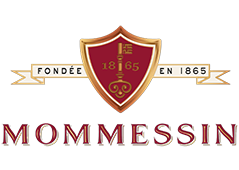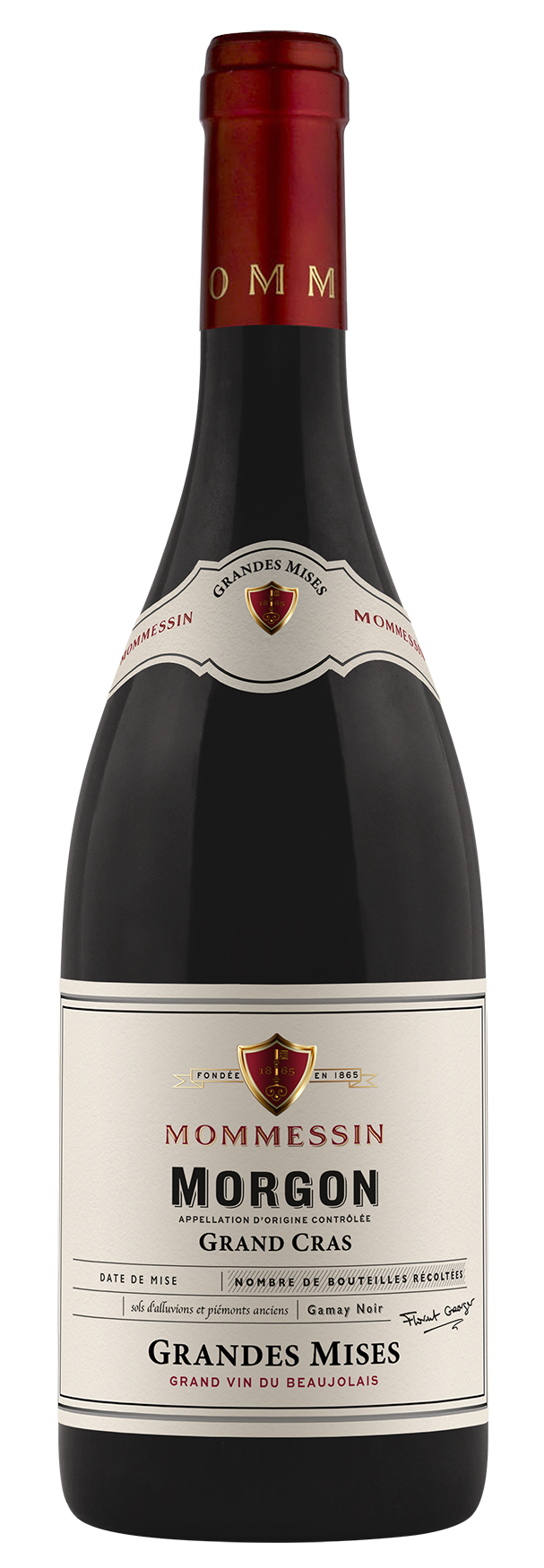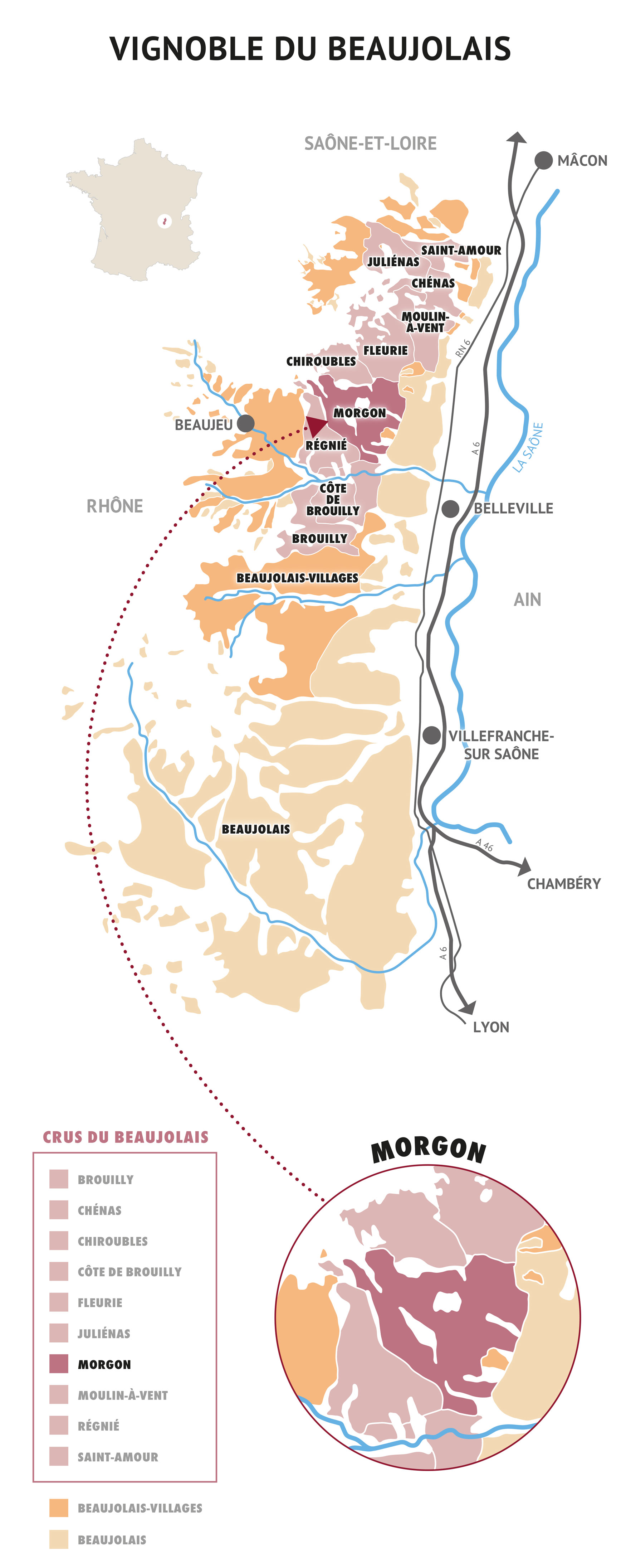Grape varietal
Gamay Noir.
Tasting notes
This Morgon - Grand Cras features a first nose of ripe stone fruit with a hint of menthol, a touch of wild thyme, spices and dark chocolate.
It boasts intense, brilliant crimson colour, revealing its structure, power and silky tannins on the palate. Ample and full-bodied with a long, remarkably complex fresh finish.
Serving suggestions
Serve slightly below room temperature, between 15 and 18°C. (60-64°F.).
Try carafing the wine to discover all the richness of this Grand Morgon!
Food and wine pairing
It is the perfect accompaniment for fine food as well as traditional regional dishes.
Ageing potential
Our Morgon - Grand Cras will benefit from a few years in the cellar, and up to 8 – 10 years if the correct temperature and humidity levels are respected.
Origins
Traces of viticulture in Morgon date back to the late 10th century. A legal document dated 956 attests to the sale of a vineyard by the lord of Beaujeu to a vassal.
Morgon is one of the ten Beaujolais crus. It is located on the hills to the west of the Saône river, at the heart of the Beaujolais crus, in the northern part of the wine producing region (50 km north of Lyon, 25 km north of Villefranche, 25 km south of Mâcon) that covers a surface area of 1,100 ha.
Terroir
Hailing from a unique terroir made up of decomposed rock and friable schist, Morgon is divided into 6 very distinct growing areas: Les Micouds, Corcelette, Douby, Les Grands Cras, Les Charmes, and the most famous, ‘Côte du Py’.
Les Grands Cras is located at altitudes of between 241 and 263 m. The soil is composed of ancient alluvial-colluvial formations for the most part that overlie granite and highly eroded blue rock. The Grand Cras soil has a 50-60 cm deep top layer containing sand or loamy sand and clay.
Located on a southwest-facing plateau, a third of the area features mica-rich hornfels originating from schist and granitic facies near the edges. These formations are pink and wine coloured and are studded with silvery flakes of mica.
Vine and soil
The vines face south-southwest.
Age of the vines: 55 years old.
Yield: 55 hl / Ha.
The vines are goblet pruned and managed with respect for the environment.
Vinification and maturing
The grapes were handpicked on 9 September 2017.
The grapes were brought in by our partner grower and vinified according to Burgundian tradition, but using the entire bunches of grapes which were transferred to concrete vats using gravity.
Maceration lasted 18 days, alternating pumping over of the must and rack and return in order to extract as much substance and structure as possible and to set the aromas and flavours. Temperatures were maintained between 22 and 24°C.
After the grapes were pressed, the press juice and the free-run juice for each cuvée were blended and racked to undergo malolactic fermentation on fine lees before being aged 11 months in vats.
Bottled in July 2018 after being very gently filtered.
20 350 bottles were produced.




